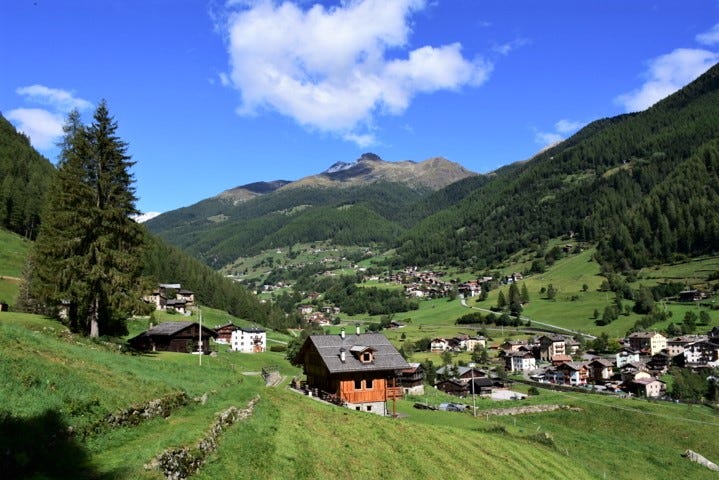The Charm of the Mountains (and a €100k Incentive): Val di Rabbi’s Unexpected Success
Il fascino della montagna (e di 100k di contributo) e il successo della Val di Rabbi
Notizia fresca dal Trentino: a Rabbi, uno dei paesi più remoti della Val di Sole, nessuno voleva più vivere. Poi è arrivato il bando provinciale che offre fino a 100 mila euro di contributi a chi decide di trasferirsi nei comuni a rischio spopolamento.
Risultato? In poche settimane sono arrivate 291 domande, di cui 30 solo per la Val di Rabbi. Una corsa a chi prima si assicura casa e contributo, tanto che il sindaco ha già detto: “Staremo attenti a chi imbroglia”.
Di solito sono piuttosto guardingo davanti a misure come queste. Spesso finiscono per creare più distorsioni che soluzioni.
Ma la storia della Val di Rabbi, con il suo mix di paesaggio incontaminato, comunità attiva e scelte politiche forti (no a serre e mele industriali, turismo contingentato), un po’ mi spiazza.
Ammetto che un pizzico di invidia c’è: vedere code di richieste per vivere in un paesino remoto del Trentino non capita tutti i giorni. E tanta curiosità: capire se questo esperimento potrà davvero diventare un modello, almeno per contesti simili.
Difficile pensare che possa funzionare ovunque ci sia spopolamento: non tutti i luoghi hanno la stessa forza attrattiva o la stessa identità comunitaria. Ma intanto, in Trentino, hanno acceso un faro interessante.
The Charm of the Mountains (and a €100k Incentive): Rabbi’s Unexpected Success
Fresh news from Trentino: in Rabbi, one of the most remote villages of the Val di Sole, nobody wanted to live anymore. Then came the provincial scheme offering up to €100,000 in grants to those who decide to move into depopulated municipalities.
The result? In just a few weeks, 291 applications arrived—30 of them for Val di Rabbi alone. A race to secure both a house and the funding, so much so that the mayor has already warned: “We’ll be watching out for cheaters.”
Usually, I’m wary of measures like these. They often end up creating more distortions than solutions.
But Rabbi’s story, with its mix of pristine landscapes, active community, and bold political choices (no to industrial greenhouses and apple monocultures, capped tourism), throws me a little off balance.
I’ll admit there’s a pinch of envy: you don’t often see queues of people eager to settle in a remote mountain village. And plenty of curiosity: will this experiment really become a model, at least for similar contexts?
It’s hard to imagine it working everywhere depopulation is an issue—few places have the same pull or strong community identity. But for now, Trentino has lit an interesting beacon.


